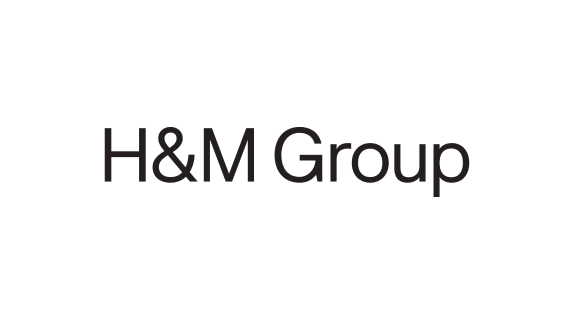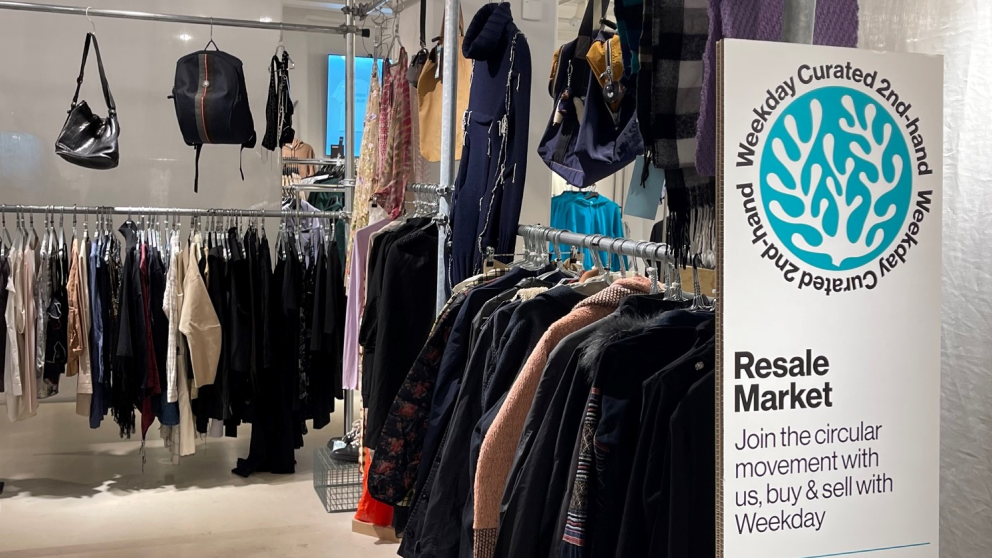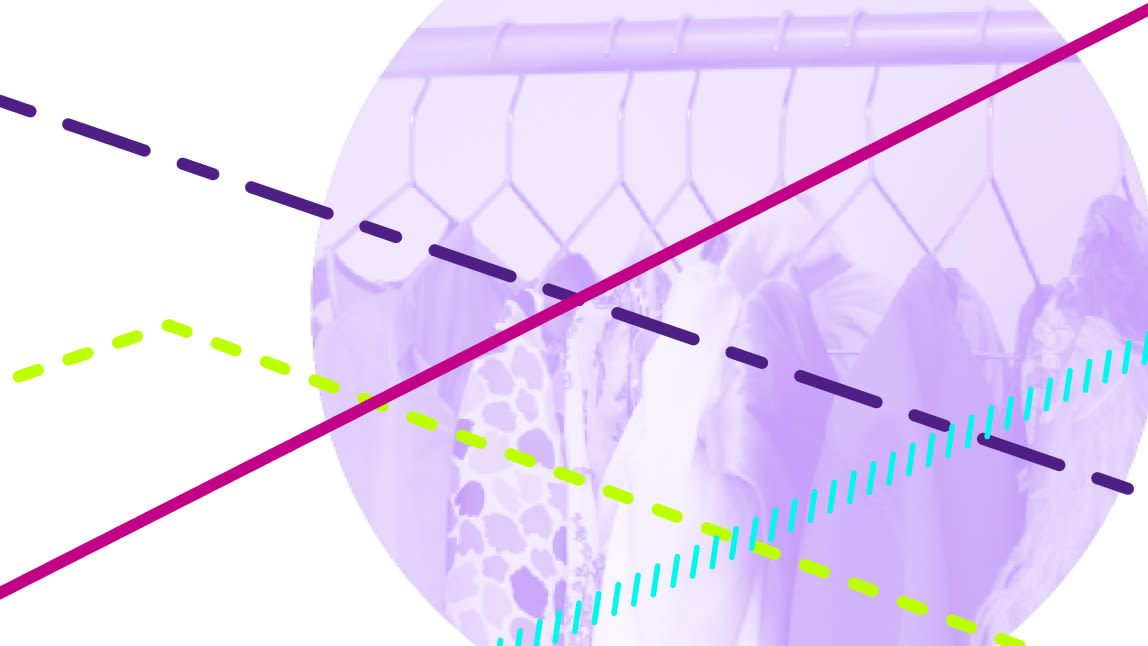
“With our size comes responsibility. The way fashion is consumed and produced today is not sustainable. We have to transform the industry we are in. Our ambition is to transform from a linear model to become circular."
- Pascal Brun, Former Head of Sustainability at H&M
H&M Group was founded in Sweden in 1947 and is now the world’s second largest fashion company. As well as H&M, the group’s brands also include COS, Monki, Weekday, & Other Stories, H&M Home, ARKET, and Afound.
As of 2020, H&M Group has more than 4,800 physical stores in 75 markets, with online shopping available in 54 countries. The group directly employs over 153,000 people, with over 1.6 million people working within its overall value chain.
H&M Group has recognised that the traditional fashion model of the last few decades is a major component of a wasteful and polluting linear economic system that needs to change. As a major player in the fashion industry, H&M Group can be a leader of this transformation.
In 2016, H&M Group publicly shared its ambition to transform into a circular business and become climate positive by 2040.
How H&M Group is progressing towards a circular economy in fashion
H&M Group joined the Ellen MacArthur Foundation as a strategic partner in 2015.
At this time, H&M Group had already established a clothing and textiles collection service in many of its stores. The ongoing collection program accepts products from any brand and in any condition. Currently, around 50-60% of the textiles deposited are reused – either sold via resale partners or given to charity. The majority of items that remain are recycled into lower value material such as insulation or cleaning cloths.
Following H&M Group’s announcement of its circular economycircular economyA systems solution framework that tackles global challenges like climate change, biodiversity loss, waste, and pollution. It is based on three principles, driven by design: eliminate waste and pollution, circulate products and materials (at their highest value), and regenerate nature. and climate positive ambition – with the aim of implementing a circular economy across its entire business – the organisation sought to build on this work by developing a roadmap for a ‘circular ecosystem’. This roadmap contributes to its climate and biodiversity ambitions. H&M Group’s strategy to develop a ‘circular ecosystem’ rests on the following three pillars:
Circular products: Creating products that are made to last, from safe, recycled and more sustainably sourced materials (i.e. either naturally grown, cultivated or created using renewable processes) that can recirculate multiple times.
Circular supply chains: Fuelling systems that recirculate products and support circular production processes and material flows.
Circular customer journeys: Providing accessible ways to experience and engage in circular fashion where products are used more, repaired, reused, and recycled.
Redesigning H&M Group’s entire value chain and operations
For H&M Group to fulfil its circular ambitions, every stage of the life cycle of a garment across all its brands, as well as the operations that support how people access these garments, need to be redesigned.
The list below sets out the different areas and operations that H&M Group is considering, including some circular economy initiatives that are being piloted and rolled out:
Circular products
Design
Circulator, a guide and tool, has been developed and tested over the last two years that supports product teams in creating products that can be kept in circulation, having been designed with more sustainably sourced materials, and are durable and/or recyclable depending on the product purpose. H&M’s brand Circular Design Story collection, used an early version of the Circulator tool to explore circular design principles for different product types. Other circular product design initiatives include,
Jeans Redesign project, where H&M brand, Weekday and Monki are redesigning jeans fit for a circular economy.
Monki’s circular collection (Jan 2021), in collaboration with circular.fashion, featuring timeless items designed to be recycled.
ARKET’s primary focus is on timeless durable designs.
Material choices
Material choices (see the material innovation deep dive below) – Choosing the right raw materials is paramount. Following its material categorisation, H&M Group favours materials that are: renewable, have the potential to be recycled, preserves natural resources and help maintain biodiversity, have significantly lower environmental footprint than the comparable raw material and protect the welfare of animals.
Circular supply chains
Garment production
Production should involve safe inputs and outputs, should be toxic-free, powered by renewable energy, and make responsible use of water.
Remaking and recycling
H&M Group are working towards a goal of 30% of recycled materials by 2025. Ahead of their ambition they have started exploring textile-to-textile recycling via partnerships with companies such as Renewcell, Worn Again, Ambercycle, and Infinited Fiber.
ARKET focuses on timeless designs and is also exploring remaking products out of used ones through limited collections. For example, women’s patchwork denim.
A collaboration with Hong Kong-based HKRITA that transformed old garments into new yarn that was used to make clothes was a commercial success.
Circular customer journeys
More use per user
The Mintcare and ‘take-care’ initiatives are being piloted to explore how H&M Group can support its customers to repair and prolong the life of clothes, as well as offering in-store repair services.
H&M Group has piloted reselling restored damaged goods, in partnership with the Renewal Workshop, through COS Resell.
More users per product
Customers in over 20 markets can now shop and sell second-hand garments through second hand platform Sellpy, where the H&M Group is the majority shareholder.
H&M brand uses its main channel hm.com to direct customers towards curated product listings at Sellpy in seven markets, and by doing so promotes pre-owned as an option for style.
Customers in three markets can buy and sell pre-owned clothes through H&M Group’s collaboration with business technology provider Reflaunt. This includes H&M Rewear in Canada and COS Resell in Germany and the United Kingdom. Weekday has also curated second hand offers for customers in Sweden through in-store consignment.
Selected H&M stores in Stockholm, Amsterdam and Berlin offer clothes rental services with specific collections.
Weekday and &OtherStories are available on fashion rental platform, Gemme Collective, in Sweden.
Families in 19 markets (as of November 2021) are able to rent childrens’ clothing through ARKET’s collaboration with Circos.
Further to these, all of H&M Group’s stores have a circular built environment strategy with an embedded target to reduce CO2 emissions by 56% by 2030, source better materials, and design shop furnishings to be reusable, repairable, or recyclable.


Supply chain transformation
To achieve their circular ambitions, H&M Group needs its vast supply chain, as well as the industry as a whole, to collaborate and innovate towards a circular economy.
A key mechanism for H&M Group to promote and catalyse innovation is the Global Change Award, initiated by the H&M Foundation, which launched in 2015 and has provided significant financial and technical support to over 30 ‘circular fashion’ start-ups. Innovators supported by the award have produced solutions including rental vending machines, dissolvable thread, and new materials from food by-products.
One supply-chain initiative that H&M Group has recently launched goes beyond its own operations. The B2B supply chain service Treadler allows others to access parts of H&M Group’s circular supply-chain, enabling other non-H&M Group brands to overcome initial barriers and accelerate their own circular transformation. In this way, H&M Group is not only aiming to transform its own supply chain, but also to support the positive transformation of the fashion industry as a whole. Such an initiative points to the potential enabling role of large linear incumbents in a future circular fashion industry.
Financing the transition
For large well-established companies there can be a significant cost to transforming operations and supply chains from linear to circular.
One mechanism that H&M Group is employing to finance its own transition is raising money through a sustainable-linked bond (SLB). The bond is linked to achieving emissions and material use targets rather than specific use of proceeds.
H&M Group has joined small but fast growing group of corporates such as Burberry, Tesco Plc, Chanel, and PepsiCo who are recognising the key role of innovative financing in scaling up the circular economy.
The benefits of H&M Group’s work towards a circular economy for fashion
Environment
The most significant benefits of H&M Group working to create a circular economy for fashion will be for the environment. Particularly, mitigating global challenges such as climate change, biodiversity loss, and water insecurity.
The fashion industry as a whole is responsible for 4% of greenhouse gas emissions, which is more than France, Germany, and the UK combined. Cotton, one of fashion’s main materials, uses about 2.5% of all agricultural land and accounts for 16% of all insecticide use, more than any other crop.
There is a similar story with water. The fashion industry consumes 93 billion litres of water each year, which is equivalent to 120,000 litres for every person on the planet. This is in the context of growing water scarcity, where 2 billion people already live in water-stressed areas, a number that is set to rise as droughts and other extreme weather events become more common as a result of climate change.
H&M Group’s market share of the fashion industry is huge. In this context, H&M Group’s work to develop a circular economy and become climate positive could have a significant impact on climate emissions and environmental performance of the industry as a whole. There are already early indications of the group meeting their circular economy ambitions. According to H&M Head of Sustainability Pascal Brun, by March 2021, 65% of materials used for the Group’s assortment was either recycled or sustainably sourced.
People and Business
For H&M Group’s customers, circular design and repairrepairOperation by which a faulty or broken product or component is returned back to a usable state to fulfil its intended use. services will allow clothes to be used more. Business models such as rental or resale, can allow customers choice and variety, at an affordable price. If products, business performance indicators, customer incentives, and supply chains are designed for circular business models that increase clothing use then they can ensure products are kept in use, at their highest value and never become waste.
Through its ambitions to design products for circularity, H&M Group is exploring different models to meet shifting customer behaviours (e.g. environmentally conscious shopping) while delivering on climate, water, waste reduction and social targets. Alongside this, H&M Group is taking part in wider conversations to ensure a just and fair transition towards a circular economy. An example of this is taking part in the Keeping Workers in the Loop project by BSR.
Deep dive into material innovation
A key step in achieving H&M Group’s circular vision relates to the target of 100% recycled or more sustainably sourced materials by 2030. Furthermore, as the group works towards this, by 2025 it aims to use 30% recycled materials. But what does this look like in reality?
Below are several examples of work that has been carried out in partnership with H&M Group's Circular Innovation Lab.
A soft material from biomass waste
Finnish start-up Infinited Fibre has developed a process that transforms used textiles, biomass waste, and cardboard into a cellulosic fiber called InfinnaTM. The new fiber is soft and has a natural feel, offering a lower impact option to cotton and viscose, without the use of pesticides or chemical fertilisers. InfinnaTM is recyclable in the same process.
A material that captures carbon
Synthetic fibre production accounts for 40% of total fashion industry emissions. French company Fairbrics has developed a technology that not only mitigates this, but could have a net positive impact on climate emissions. The material is made using CO2 captured from industrial sources that is reacted in a chemical process and turned into polyester, with the same performance and recyclability characteristics of conventional polyester.
A material made using bacteria
Bioextrax was founded in 2014, with a vision to create bio-based and chemical-free production processes that don’t harm the environment. One challenge Bioextrax and partners are attempting to solve is the production of a bio-based polyurethane foam in the H&M Group supply chain, which is used in bra cups and other applications. Its approach is to feed specific microbes with waste biomass to create a bio-plastic called PHA, which is then blended with keratin derived from chicken feathers, blown into foam and then pressed into shape in moulds. One of the by-products of the process is protein that can be used to fortify animal feed mixes.
A waterless and waste-free dyeing technology
Textile dyeing is one of the most polluting and resource intensive stages in the production process. UK company Alchemie has developed a waterless smart dyeing technology that delivers nanodroplets deep into the textile fabrics using a precisely controlled airflow. Alchemie’s dyeing approach significantly reduces the emissions and water, chemical, and energy use of the process. As the dye application technology is spraying instead of traditional dipping, it also eliminates wastewater production.






